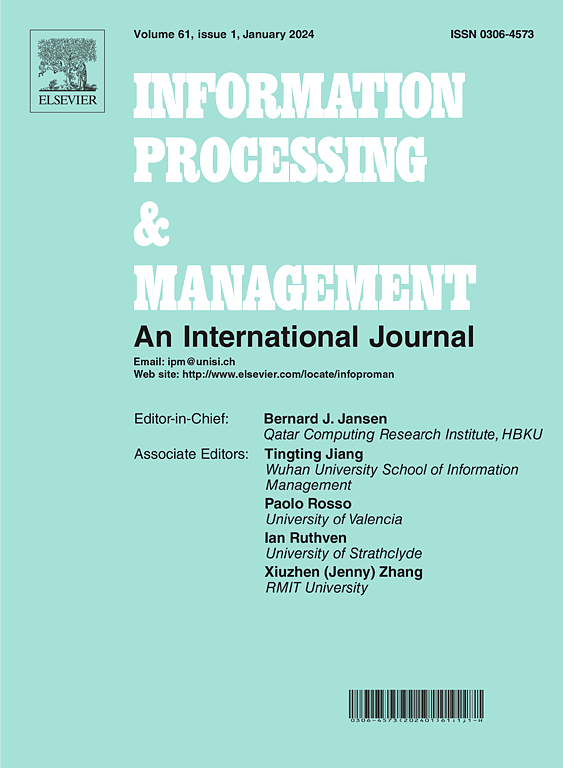Hypergraph negative influence blocking maximization via influence estimation
IF 7.4
1区 管理学
Q1 COMPUTER SCIENCE, INFORMATION SYSTEMS
引用次数: 0
Abstract
The rapid advancement of internet technology has accelerated the spread of negative information. To block the impact of such diffusion, selecting a set of positive seed nodes for competitive propagation is a viable strategy. However, existing studies have predominantly focused on pairwise user interactions, neglecting group relationships. To address this gap, we employ a hypergraph to model higher-order group interactions, defining the hypergraph influence blocking maximization (HIBM) problem and proposing the hypergraph competitive susceptible–infected (HCSI) diffusion model. We then prove the monotonicity and submodularity of the objective function, enabling the development of a greedy algorithm. To address the high computational complexity of the greedy approach, we further propose an efficient heuristic method, hypergraph competitive influence estimation (HCIE), which leverages a probabilistic formula to estimate the influence of negative seed sets under the blocking effect of positive nodes, thereby selecting positive nodes to minimize the propagation of negative information. Experimental results demonstrate that the HCIE method reduces the diffusion of negative information by over 10% on certain datasets, showcasing its effectiveness and robustness. Additionally, the HCIE method achieves performance close to that of the greedy algorithm while significantly reducing computational time.
通过影响估计实现超图负面影响阻塞最大化
互联网技术的飞速发展加速了负面信息的传播。为了阻止这种扩散的影响,选择一组积极的种子节点进行竞争传播是一种可行的策略。然而,现有的研究主要集中在两两用户交互上,而忽略了群体关系。为了解决这一差距,我们采用超图来模拟高阶群体相互作用,定义了超图影响阻塞最大化(HIBM)问题,并提出了超图竞争易感感染(HCSI)扩散模型。然后,我们证明了目标函数的单调性和子模性,从而使贪心算法得以发展。为了解决贪心方法的高计算复杂度,我们进一步提出了一种高效的启发式方法——超图竞争影响估计(hypergraph competitive influence estimation, HCIE),该方法利用概率公式来估计负种子集在正节点阻塞效应下的影响,从而选择正节点以最小化负信息的传播。实验结果表明,HCIE方法在某些数据集上减少了10%以上的负面信息扩散,显示了其有效性和鲁棒性。此外,HCIE方法在显著减少计算时间的同时,实现了接近贪婪算法的性能。
本文章由计算机程序翻译,如有差异,请以英文原文为准。
求助全文
约1分钟内获得全文
求助全文
来源期刊

Information Processing & Management
工程技术-计算机:信息系统
CiteScore
17.00
自引率
11.60%
发文量
276
审稿时长
39 days
期刊介绍:
Information Processing and Management is dedicated to publishing cutting-edge original research at the convergence of computing and information science. Our scope encompasses theory, methods, and applications across various domains, including advertising, business, health, information science, information technology marketing, and social computing.
We aim to cater to the interests of both primary researchers and practitioners by offering an effective platform for the timely dissemination of advanced and topical issues in this interdisciplinary field. The journal places particular emphasis on original research articles, research survey articles, research method articles, and articles addressing critical applications of research. Join us in advancing knowledge and innovation at the intersection of computing and information science.
 求助内容:
求助内容: 应助结果提醒方式:
应助结果提醒方式:


